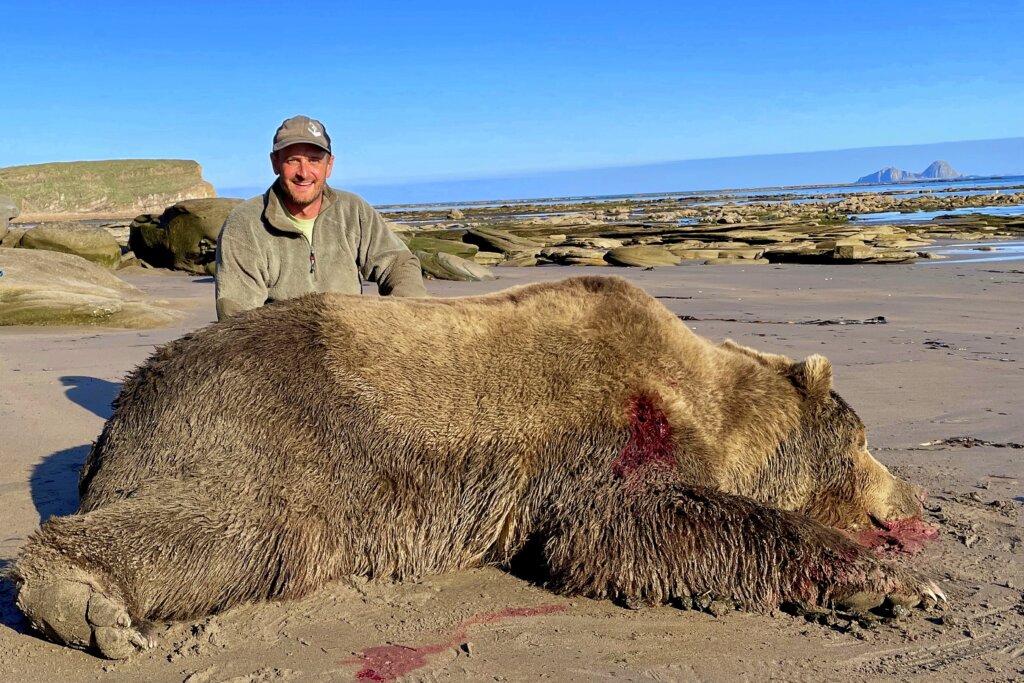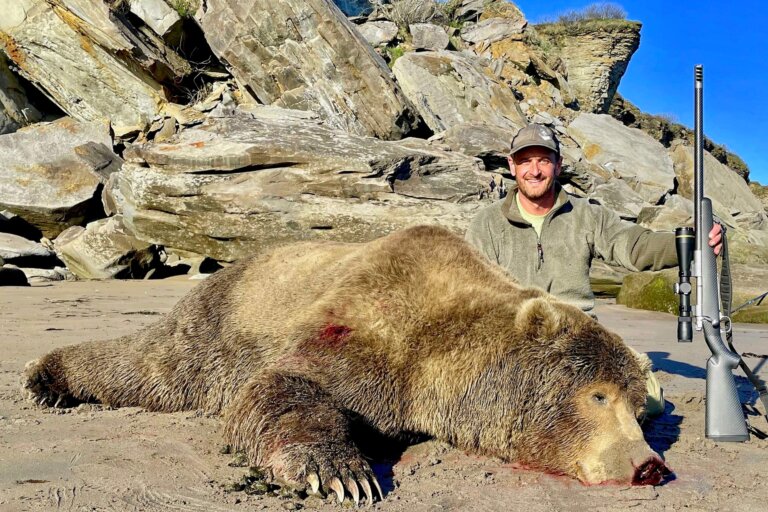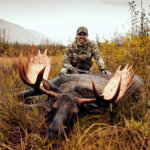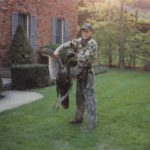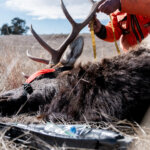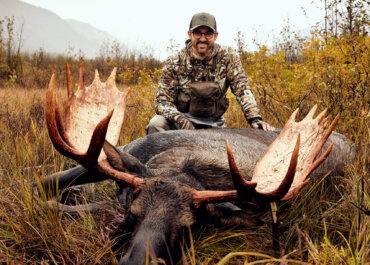Hunting coastal brown bear in Alaska is the ultimate in North American big-game experiences. Some might say, no, it is sheep hunting or maybe elk but there’s something extraordinary about having the opportunity to hunt these bears in some of the most magnificent and unforgiving terrain left in North America. They are the kings, one of the largest land carnivores on the continent.
There are three key areas in Alaska to hunt brown bear. Kodiak Island, known for producing bears with some of the largest skulls; southeast Alaska’s ABC Islands, known for boat-based hunts and having the highest density of brown bears per square mile; and the Alaska Peninsula, known for producing some of the largest brown bears anywhere. Peninsula brown bears are closely managed for trophy quality and seasons are rotated depending on the year. There’s a spring season (May 10-25) during even-numbered years and a fall season (October 7-21) during odd-numbered years. But when Covid-19 was declared a global pandemic in early 2020, the spring season was canceled and rescheduled for 2021. So these bears hadn’t been hunted, let alone had any human encounters, in nearly two years.
The Peninsula extends nearly 500 miles southwest of mainland Alaska and separates the Pacific Ocean from Bristol Bay. It’s a tundra environment with countless salmon streams, alder-choked hillsides and volcanic peaks, some of which are still active. It truly is one of the last wild places left in North America and is home to a variety of wildlife from moose, caribou and brown bear to countless species of bird and marine life.
It’s a challenging hunt. You need to be in good physical condition to hunt here. But, more importantly, mentally prepared. You’ll spend long days on a hill glassing, especially during spring hunts when there’s 18-plus hours of daylight. Like anywhere else, patience is key when hunting in Alaska. Just because it’s Alaska doesn’t mean there’s game everywhere. There are a lot of bears, but a lot of places for bears to hide too. This is some of the biggest country most hunters will ever see. It’s amazing how much glassing you’ll do and still turn up nothing. Then, all of the sudden, there’s a bear!
Bears have a tremendous sense of smell so it’s vital you play the wind right, sit tight and not scent up the area. Everything needs to be perfect before you make that stalk. Also, be prepared for weather delays. The Peninsula sees some of the craziest weather anywhere and if you can’t glass due to weather, you can’t hunt. Bring a book (or two!) and be prepared for a few days in the tent. Weather is just one of the reasons these are 10-day-plus hunts.
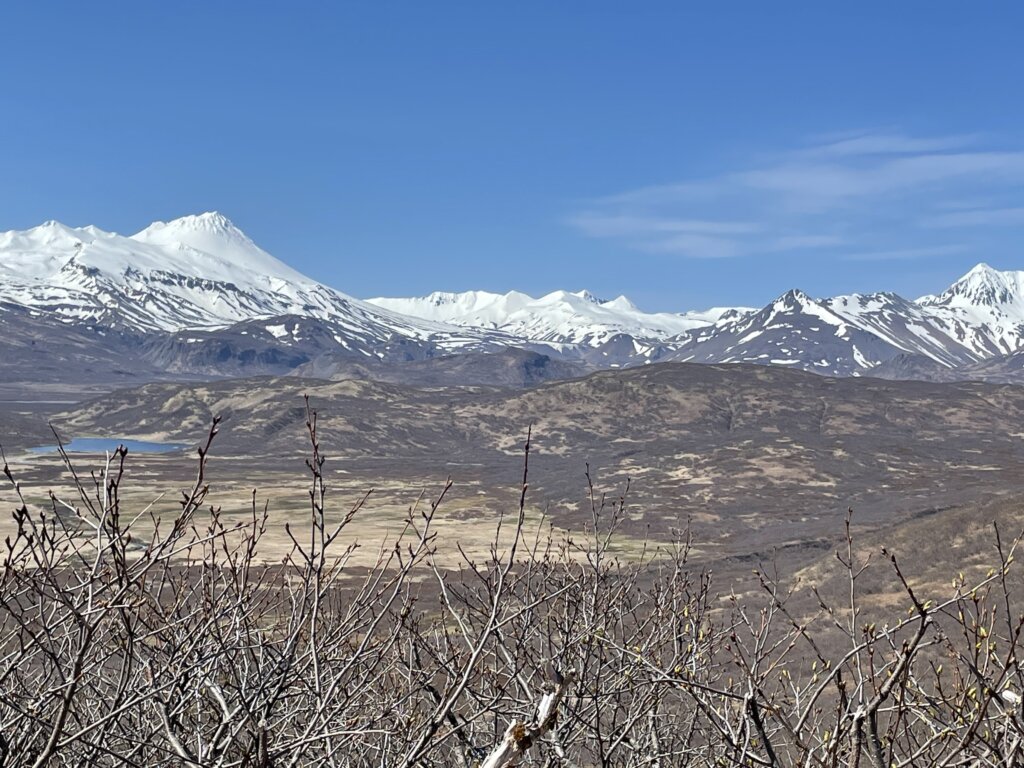
This hunt happened on short notice. I had two customers whose hunt was postponed from 2020 booked for this hunt, then a third spot opened up and I jumped all over the opportunity. To hunt brown bears, non-residents must go with a guide or next of kin who is an Alaskan resident, the same as for sheep and mountain goats. Making it more intriguing, I’d be hunting in one of the few wildlife refuges on the Peninsula, along the Pacific side, where the outfitter has exclusive hunting rights for non-residents. This concession sets up perfectly for hunting these bears, spring or fall. It stretches from the Pacific Ocean inland for several miles to high snow-covered mountains with countless miles of salmon streams in between. Spring hunts are typically spent glassing the snow fields up high as bears are just emerging from their dens, gradually moving down as boars seek sows as the mating season heightens. Fall hunts are spent focusing on one of the many rivers and streams where bears feed heavily on the protein-rich salmon prior to hibernation.
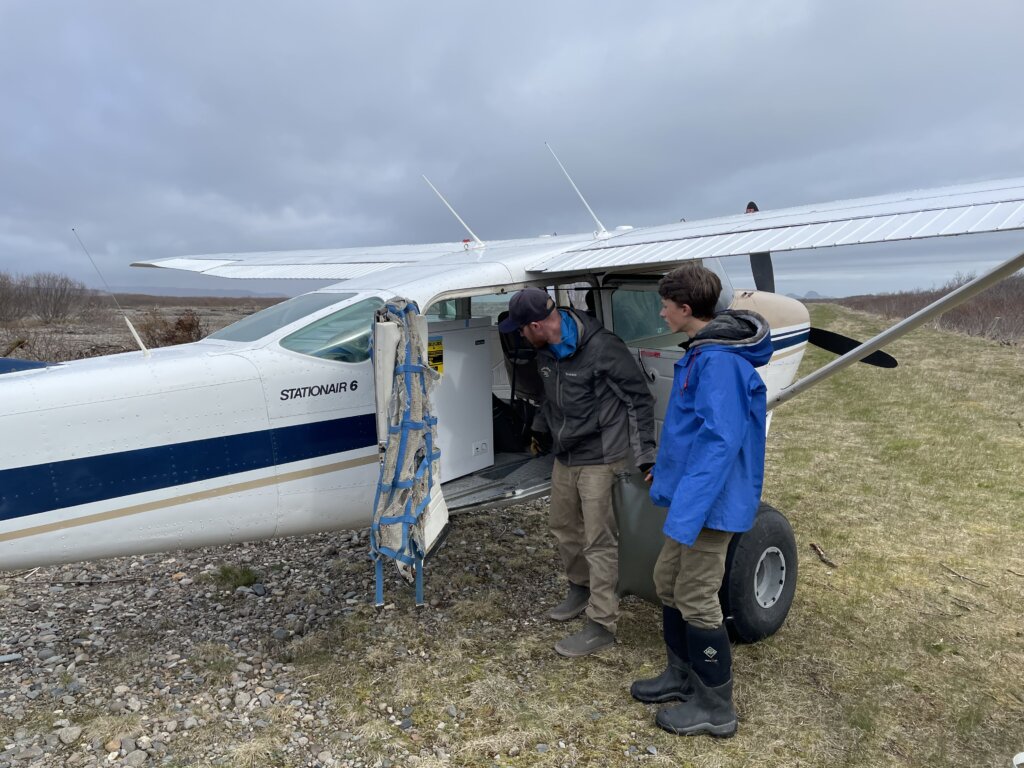
My travel to Alaska was uneventful; a direct flight to Anchorage followed by an overnight stay, then a quick one-hour flight the next day to King Salmon, the jumping off point for most hunts on the Peninsula. Luckily we had good weather that day and were able to make the one-hour bush plane flight into base camp that evening. Base camp consisted of several tents with cots set up for hunters and guides, a dining tent, supply tent and cook shack. While there’s plenty of good hunting around base camp, most of the hunting is done from smaller spike camps strategically placed throughout the hunting area.
Important pieces of equipment for a hunt like this consist of quality rainwear that can handle the harsh Alaskan elements. Tough rainwear like Helly Hansen or Grundens are preferred. Also good-quality waterproof footwear, a pack of at least 5,500 cubic inches for carrying your personal gear, quality 10x (or higher) binoculars, and at a minimum a .338-caliber rifle with premium bullets that expand well. These bears are extremely tough animals with thick hides. You want to put them down as quickly as possible before they have a chance to run into the thick Alaskan brush. No one relishes the thought of tracking a wounded brown bear in that stuff.
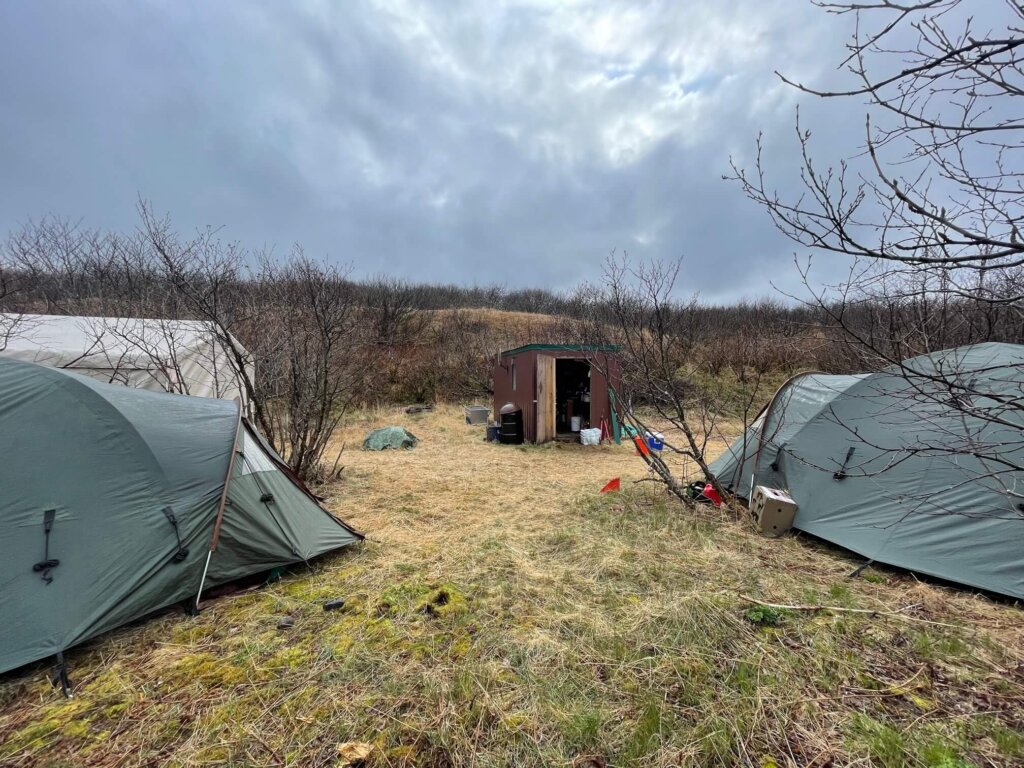
My guide and I covered more than 80 miles on foot in 10 days to look over a large portion of the hunting area. We spent a few days in various spike camps, locating multiple bears each day trying to find the right one. If you harvest a bear on the Peninsula you have to wait four years to hunt there again, so for me it was go big or go home. In the spring, the majority of bears are found high in the snow fields, at times still hanging close to their dens. We saw sows with cubs, young boars and mature boars – and we just needed one big boar in the right position for a stalk. In fact, we located multiple 9’6”+ bears, including the same boar in the same valley the first three days of the hunt. We just never caught him in the right spot.
Fast forward toward the end of the hunt. We located a large boar about two miles up the valley from where we’d been glassing all day. It was the second to last day of the hunt. We’d picked apart this entire area and only turned up a small boar and a sow. Very long day! It was already nearly 11 p.m. and we still had an hour hike back to our tents. I decided to do one more grid with my 15x binos, and just like that, a bear! A big boar too. Definitely a bear worth taking. But due to the wind, we were forced to back out, hopeful we could relocate him the following day. We’d been watching this particular ridge (that jutted into the ocean) off and on throughout the hunt. It was four-plus miles away from our camp, but there seemed to be more activity that way each day. Plus, it was where we thought that big bear we had just found may be headed. We knew we had a full day ahead so we woke early, grabbed a quick bite and cup of coffee and loaded our packs for the morning hike. This area was located right along the coast so most of the hike was along the beach. There was already a spike camp in that area so we could spend the night there if needed. Half way there my guide located a bear about two miles in front of us, right on the beach. We needed to get a closer look. The wind was perfect. As we were closing the distance we caught sight of another bear on the beach, a huge boar, who began to chase a sow up the hill and over the ridge. It was late morning by now and we figured they were going to bed up in the area for the day.
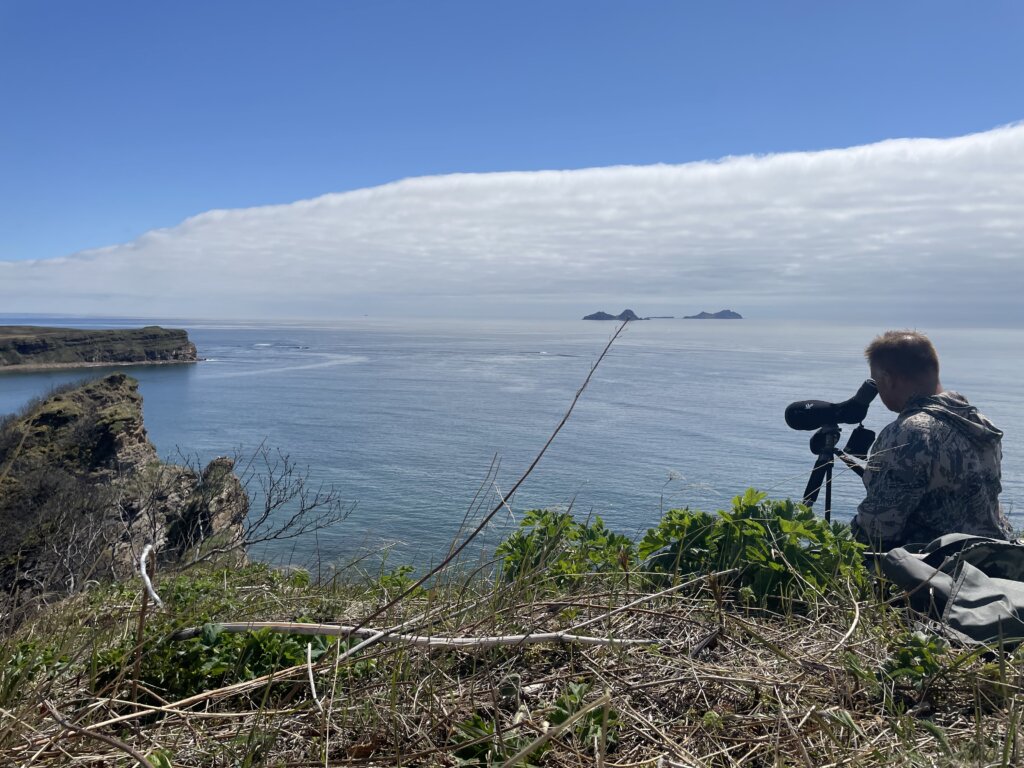
We climbed up into the bluffs about 100 feet above the beach so we could get a better view of the area. The wind was in our favor and it was the perfect set up to intercept any bear coming down the beach or in the hills to our north. We were confident this bear was going to come back to the beach in the evening. We had a long day ahead of us as most evening activity wasn’t happening until 8 p.m. or later. The weather was beautiful and the setting incredible. Perched high in these bluffs overlooking the Pacific, it felt more like hunting in some tropical paradise rather than one of the harshest regions on the planet. I remember thinking back on the past 10-plus days and all the miles, all the bears (and other wildlife), plus stories back at camp. It was already a successful hunt. Then, at about 7 p.m. I happened to scan the ridge where we last saw the boar and sow. I could clearly see a dark object with my naked eyes that wasn’t there a minute ago. I threw up my binos and couldn’t believe what I saw. It was the boar from this morning.
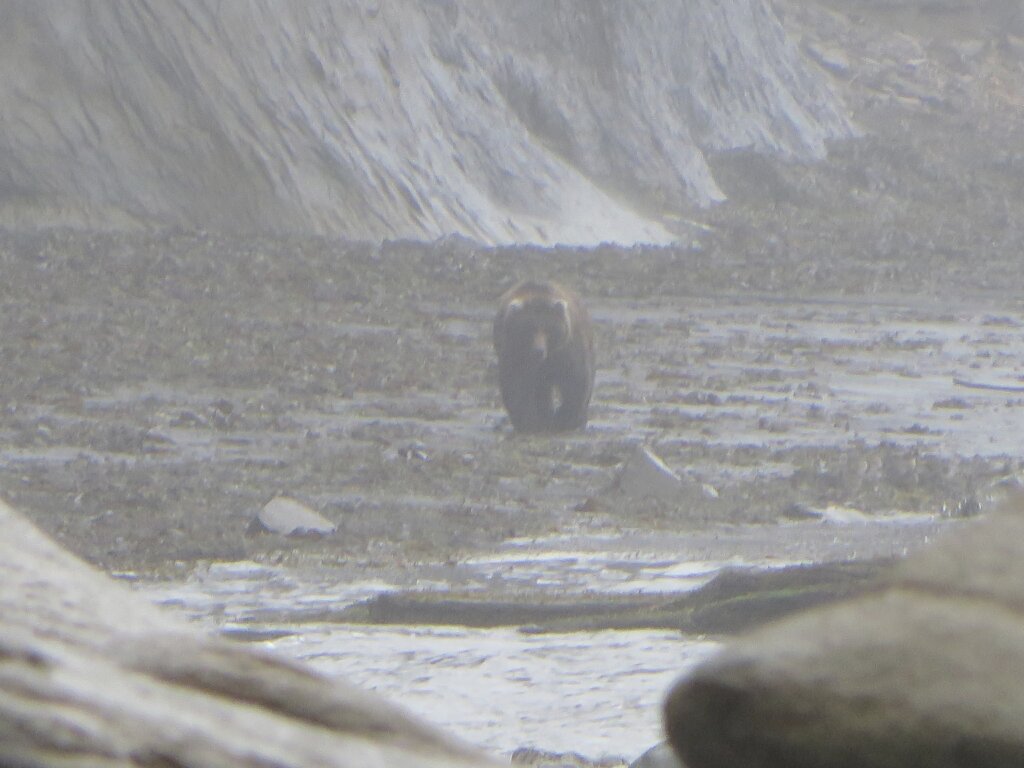
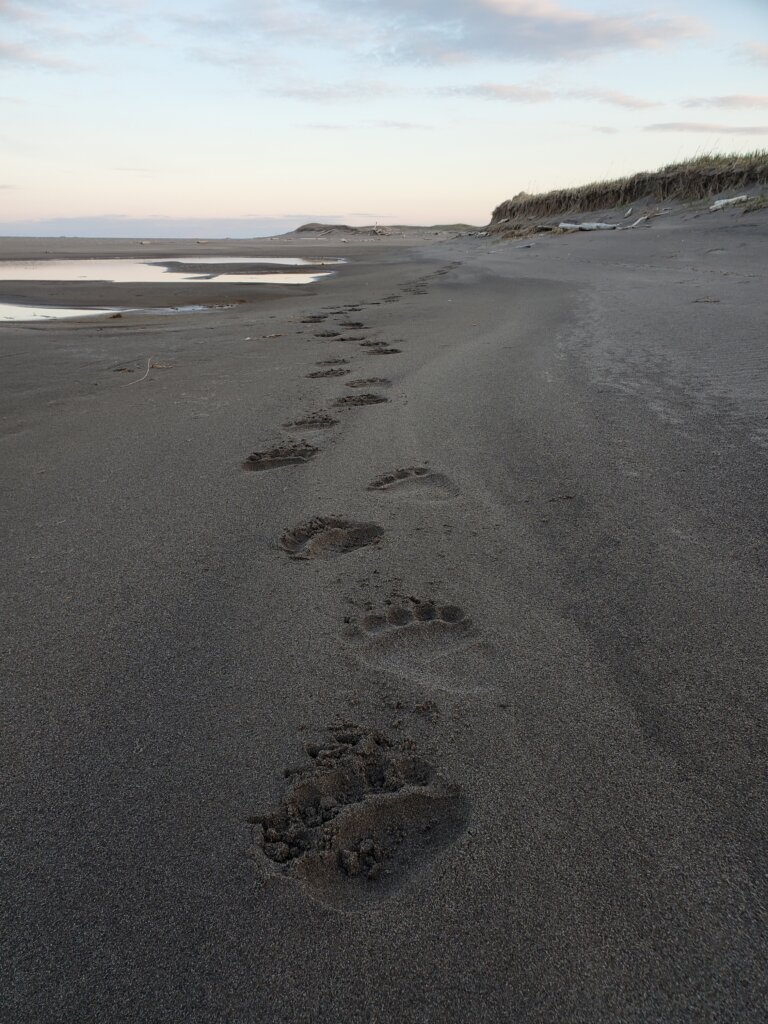
He soon dropped to the beach and began making his way in our direction. There was nowhere for him to go except right past us. I lay prone on my pack at a very steep angle down toward the beach. I ranged some rocks at 130 yards and waited. The bear covered the one mile rather quickly and I’ll never forget watching him walk into my scope. The first shot hit him square in the shoulder and spun him around. I hit him a second and third time in the opposite shoulder. He quickly expired right there on the beach, on the last day of the season. I couldn’t believe what had just happened. The outfitter told me the first day that you earn a bear when you come to the Peninsula. I understood now what he meant. We hiked down to the bear and snapped a few photos. The tide was rising and we knew we had a few hours of skinning ahead of us. I took a quick measurement of his front pad; just over 9 inches. His teeth were worn down and he had long white claws; tell-tale signs of an old bear, a king.
